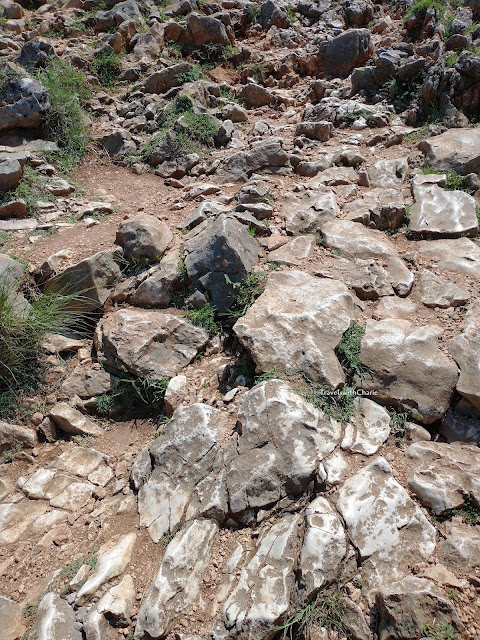
Church of St. James the Greater (Apostle)
Medjugorje became the center of pilgrimage for Catholics when Mary, the Mother of God appeared in the hills above this town in June 1981 to several young visionaries. She appeared for several days to them to deliver the messages of peace, faith, prayer, conversion and fasting. These apparitions continue to this day on the 25th of the month to Marija Pavlović, one of the visionaries. Here’s her message from April 25, 2022 taken from medjugorje.hr.
“Dear children! I am looking at you and I see that you are lost. That is why I am calling all of you: return to God, return to prayer—and the Holy Spirit will fill you with His love which gives joy to the heart. Hope will grow in you, also for a better future, and you will become joyful witnesses of God’s mercy in you and around you. Thank you for having responded to my call.”
I started my pilgrimage at St. James. Mass was being celebrated when I arrived so I attended the mass before setting out on the pilgrimage trail.
It was a hot day in May when I started on the trail. A local advised me to bring water and wished me luck so I bought another bottle for €1. I had a half bottle of water in my bag. (I was shocked at how cheap the bottled water was as it costs €2-€3 in other European countries. $4 at a U.S. airport concessionaire.) The pilgrimage trail is well marked up until I reached the wide open fields. I thought I was lost at first until I saw some pilgrims heading back to town.
Apparition Hill is behind these hills in the photo. Mary’s first appearance to the visionaries in 1981 was on Podbrdo, now called Apparition Hill. I had started walking past noon and it took me 35 minutes to the bottom of Apparition hill. Actually, before you reach the bottom of the hill, you have already climbed uphill on a paved road in the Bijakovići neighborhood. At the top of the paved road flanked by souvenir and religious shops, I was surprised to see the rocky surface below.
This was the way uphill. There are no stairs nor paved areas. I had no idea it was like this because when I watched videos about Medjugorje, I didn’t see this rocky trail. So I was ill prepared for this pilgrimage. And I was having troubles with my knees.
This is just the beginning of the climb. I tried to go up to test the difficulty and realized I couldn’t do it. I had good, comfortable shoes but I really needed thicker soles because the rocks protrude sharply in some areas. I also was debilitated by carrying my heavy coat which I brought with me since it was cool in the morning when we started the trip from Dubrovnik to Bosnia Zerzegovina. Thirdly, I realized I was scrambling up rather than climbing up. So I decided not to go up to the first apparition site at the top of the hill. Going down the short distance was more difficult as people were going up and I had to carefully find my way down without falling or slipping.
Back at St. James, I sat under the shade in the open area where large, religious gatherings are held and stayed there until I cooled down.
Statement of the Vatican about pilgrimages to Medjugorje: https://www.vaticannews.va/en/pope/news/2019-05/pope-authorizes-pilgrimages-to-medjugorje.html
This is the main street in Medjugorje where you can find restaurants, souvenir and religious shops and cafés. It’s right in front of St. James Church. My guide was picking me up here to continue our tour to Mostar and the Republic of Srpska.
Novena to Mary, the Queen of Peace: http://www.medjugorje.hr/en/medjugorje-phenomenon/novena/
Information about the group tour to Bosnia Herzegovina from Dubrovnik: This was a small group tour with 8 people. We started early and dodged the big tourist buses at the border. We passed several borders so we had to present our passports in Croatia and then in Herzegovina. Since we had to pass through Croatian territory before accessing the road to Kravica Falls in Herzegovina, we had to show our passport a third time. Our guide and driver was Ivan from Select Dubrovnik Travel. I highly recommend this small group tour as we had the opportunity to ask questions about history, politics and culture of the places we visited. Our guide was patient, knowledgeable and happy to answer our questions. The tour also included coffee breaks/restroom stops which is so necessary for a full day tour.
*****
Images by TravelswithCharie





